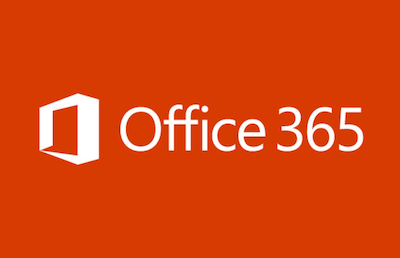Social recruiting can also be referred to as social media recruitment or social hiring. It is defined by Wikipedia as “recruiting candidates by using social platforms as talent databases or for advertising.” Social recruiting is a strategy used by HR professionals to attract top talents. Social media platforms are used by top organisations to boost the interest of people in applying to their organisation and increase their brand visibility.
There are lots of individuals actively looking for work and the fact that you don’t get any response to your job ads does not mean that they are off the job market. However, they are all over social media platforms.
There are two paths in social recruitment. The first path is to increase your brand’s reach and visibility with job marketing and depending on the power of social media to spread the job as far as possible. The second path is to vigorously search for top talents with the information available on social media.
There are lots of criticisms of social recruitment. Some people say that a true social recruitment process shouldn’t be conducted on public forums rather; they should be conducted on a social network that’s built purposely for job seekers.
Why Traditional Recruiting Strategies Are No Longer Enough?
There are lots of reasons why businesses are shunning the old recruiting strategies. Traditional recruiting is less efficient than social recruiting because it relies on sourcing for job candidates in an expensive and time-consuming way. Although this recruiting strategy is still being in use, there are lots of significant drawbacks over a social recruiting strategy that’s well-formed.
Traditional recruitment strategies create little room for innovation and growth. This recruitment technique has always relied on heavy human input to source, attract, and hire top talents for a particular job role. Depending on the number of applicants, this hiring technique is slow, time-consuming, and subjective. This can result in the recruiter having less time to review each and every application individually which does not guarantee that each job seeker will get the same fair equal treatment during the process of reviewing each job application. This can put HR teams or the company at risk of making a hiring decision that’s prejudiced or biased which makes the strategy inconsistent.
The fact that traditional recruitment strategies heavily depends on human inputs put the strategies at risk of making a hiring decision that’s unconsciously biased which then result in Lack of diversity. As humans, our decision making is based on our personality and can be influenced by a lot of factors that are not relevant to the hiring process. This can result in the promotion of a workforce that lacks difference in thoughts, perspectives, work styles, and diversity. If this continues, the progression and productivity of the organisation can be affected negatively.
Why Should You Adopt Social Recruiting Strategies?
There are lots of reasons why you should adopt social recruiting strategies. Over the years, we have seen that existing recruitment strategies have not been as effective in finding top talents as they were initially. Although, people are still being driven to sites, through job boards, LinkedIn ads, and so on. However, companies have not been able to get the top talents they need from these methods.
On the other side, statistics have shown that most job applicants are active on four to five social networks. Some use more of these social networks, while some applicants use them less, which give recruiters the digital footprints of candidates. From the data generated from these footprints, recruiters can identify, engage, and communicate with top talent through social media. A more powerful way of reaching top talents is the ability to talk, chat and engage with everyone across multiple channels, which cannot be gotten from job boards and other traditional recruitment strategies.
Benefits of Social Recruiting
Social recruiting goes past placing job ads on the social network accounts of a company. It is much more than that! This recruitment strategy uses social media platform to proactively source for top talents, engage with them, and convince them to apply for vacant job positions. Some of the benefits of social recruiting include:
Reaching passive talents and getting more referrals
The use of social media platforms might be the only way for your job ads to reach passive talents as a job board or company careers site does not have the resources to reach them. Social media also makes it easy for companies to get candidates referrals. With just a click on these social network platforms, your job openings can be shared with friends, family members, and colleagues!
Target your perfect candidates and establish a personal connection with them
The perfect medium to reach applicants with various background, nationalities, ages, genders, and industries is through social media platforms. However, if you have a narrowly defined and specific candidate persona, then you can use the advanced search filters provided by these platforms to get your ideal candidates. Also, you can use these social media networks to establish a more personal connection with potential applicants. A social recruiting strategy that’s effective should operate like a conversation. Social media gives candidates the ability to connect with top brands in low pressure and low-key environment. Employer branding and recruiting new talents can be greatly influenced when you develop and showcase unique company culture. If your company’s amazing culture is displayed, then a lot of people will want to become part of it!
It’s free to use!
Although, there are some social media features that cost money. LinkedIn features such as recruiter license job slots and job posts come at a price. However, it costs nothing to share your vacancies on your company’s LinkedIn, Twitter, Facebook, or Instagram page. It’s important to take advantage of these social media accounts then track and report your success on these platforms to know the most effective platforms.
Screen your applicants
When you assess a candidate’s application, you can review their skills, previous experience, and personal qualities. However, you can’t check for alignment with your company culture and values. This is where the social media check comes in. You can review the candidate’s skills, personal qualities, and previous experience while assessing their resume. However, the resume won’t tell you if the candidates align with the culture and values of your organisation. This is where social media screening comes in. Although you need to seek caution when reviewing the social media profiles of applicants, more candidates have started including their social media links to in their resumes. When you view their social media page, then you will have a glimpse of their interests, hobbies, and the type of content they’re posting and engaging with.
Stages of Social Recruiting
Define Your Objectives and Audience
One of the most important social recruiting strategies that most people don’t do is defining their objectives. We have seen a lot of people join some social media platforms without knowing why they are doing it. We have seen lots of CEO’s join social media platforms like twitter because their children asked them to. However, the first thing that you need to do is to understand your objectives for each platform. Do your homework and decide on the best platform for you because Twitter is different from LinkedIn and Instagram is different from Pinterest, so each platform will have a different objective. Also, you need to understand what your target audience is, where they’re based, what they look like, what sites they visit, and what you’re recruiting for. When you understand them, you can create your candidate persona and map them out. Although it takes some time, you will get proper results when it’s done effectively.
Select Your Platforms
When you define your objectives and audience, the next step is for you to select your audience. You shouldn’t just go straight to LinkedIn like most people in the IT and tech industry. A lot of these candidates are no longer active on such platforms; rather they are active on others. So open your mind and do not make assumptions.
Choose the right people and provide training.
You need to select the right people in your team that is suited and motivated enough to help you with your brand’s social media activities. It doesn’t matter if you hire a social media manager, or you ask your HR team to push contents out or handle engagement, what matters is that you have a capable hand that’s handling your social recruitment process. After choosing the right people, then you need to provide very good training and understanding about your objectives, audience, and platform to enable them to work efficiently.
Define Your Content Strategy
You need to define the content that will be posted on those platforms. You need to determine how the content will look and who will create the content whether you or other people or your HR team. Whatever that looks like or whoever creates it, ensures that your contents meet your objectives, improves your brand visibility and attracts top talents to your company.
Measurement and Monitoring
Also, you need to measure and monitor your strategies to know its weekly or monthly performance. This will help you determine what needs to be changed, tweaked, and maintained. You can use monitoring platforms such as Google Alerts, Mention, Radian6, and Meltwater, to monitor your website, potential candidates, social recruiting strategies, and your website.
How social recruiting Software works
Social recruitment software makes recruiting easier, streamlined, and simpler. It helps organisations to showcase their brands and build a strong relationship with potential candidates. It also allows companies to reach a wider audience for their job positions from a single screen.
There are lots of tools and software designed to help you navigate the social media space. This software does a little more than helping you to gather candidate’s basic information. Also, there are other platforms who claim to use artificial intelligence to make social recruiting very easy.
There are also software and platforms whose specialisation is to locate potential passive talents. They collect candidate’s data from various social media platforms and combine them to make a single profile that’s integrated into a candidate’s tracking system.
People who meet specific requirements can be found and ranked using Algorithmic-based technologies. It is then up to you to reach out to the passive talents sourced out and check if they are interested in working for you.
You need some finessing when contacting passive candidates via social media some software or platforms are capable of performing automated checks to know if a potential employee has a connection to any member of your staffs.
The talent insights analytics tools of LinkedIn can help you identify potential targets. The tool can also be used to estimate the demand for talents with certain skill sets using the InMails Volume of the platform.
Also, you can use Facebook as part of your social recruiting strategy. There is a business strategy developed by Facebook which can be used by companies to create recruitment websites or chatbots.
Conclusion
Social recruiting uses social media as a platform to share and promote jobs. This recruiting strategy has the potential to increase a company’s exposure and visibility than traditional recruitment techniques.
From the recruitment of employees to retention, you need to ensure that your employees or potential employees are engaged on social media to create a work environment that’s highly productive. Although the needs of modern job seekers have been matched greatly by social recruiting, you need to follow an efficient recruiting process with a developed and integrated retention strategy in other to create a consistent culture in your company.
Although, the result of a well-designed recruitment and retention strategy might not be seen immediately, it’s something that you need to consider if you want to stay ahead of your competitors. The salary or bonuses that come with a job position does not really matter is your ability to engage with potential employees in an environment that shows them that they will grow, empowered, and respected.
References https://recruitment.com/tools/social-media-recruiting-strategyRecruitly offers social recruitment tools out-of-the-box to promote your jobs. Talk to us today learn more or to schedule a demo.









